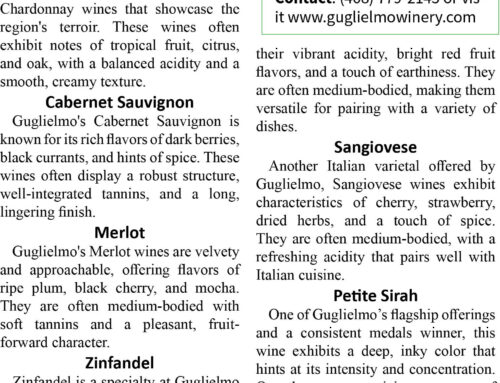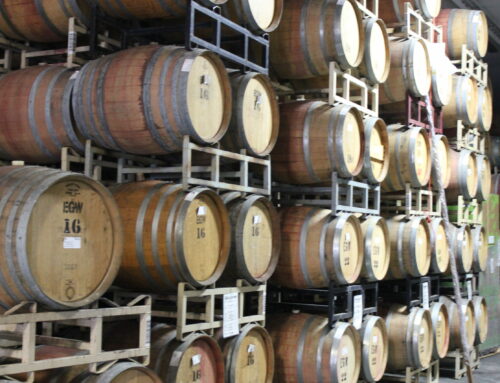Different wines have different needs during fermentation process
Published in the Sept. 3-16, 2014 issue of Morgan Hill Life
By Alicia Cuadra-Cutler
As harvest arrives in the South Valley, it is nice to take a look at what magic happens to transform those luscious grapes from the vineyard into delicious wine in the cellar.

In primary fermentation, yeast is either added or comes in on the grapes from the vineyard naturally. These yeasts eat the sugar, and convert it into alcohol. As this happens carbon dioxide gas escapes, and pushes the solid matter in the must up to the top of the fermentation vessel. This is called the cap.
The cap must be circulated or mixed with the juice periodically. It is either “punched down” literally with a large tool in open top containers, or “pumped over” with a large hose if a tank is being used. This happens a few times a day, and each winemaker has his or her own preferences about when or how to do this each day.
After a couple weeks the primary fermentation is complete. The must is then put into a press and all the wine is extracted.
If a white wine is being processed, the grapes are put into a press immediately after sorting, and the juice extracted from the fruit is used for fermentation. This processing difference is because the skins are the source of tannins and color for a wine. White wines don’t need to get color from the skins, nor any additional tannins. Therefore white wines skip the process of skin contact, and are processed as juice alone.
The wine is then moved to a tank or into barrels for further processing. Most red wines and a few white wines go through a secondary fermentation called Malolactic fermentation. This process converts the bitter Malic acid into a softer and more palatable Lactic acid. The byproduct of this process is the soft mouth feel and buttery flavor often associated with Chardonnay. Some wines are processed exclusively in stainless steel and do not go through a secondary fermentation. These are often called “unoaked,” “naked” or “stainless.”
After the desired fermentations are complete, a process called “racking” is performed. This means the clean and clear wine is moved to another container, and the remaining yeast cells and plant material that has settled to the bottom of the original vessel is left behind. This helps clarify the wine and prevent any off-flavors or undesired odors.
The wines then rest to age and absorb some oak influence if going into barrel. After the desired balance and flavors are achieved, the wines are put into bottles. Even after bottling, many wines require additional resting time to achieve their full potential.
Different types of wine have different needs, and not all wines benefit from heavy oak influence. Even though wine is technically produced after the fermentation ends, the process of aging prior to bottling can take anywhere from six months to three years. So the next time you enjoy a glass, take a moment to appreciate the process and thank your favorite winemaker for their dedication. Cheers!
Alicia Cuadra-Cutler is a Certified Sommelier, and Assistant General Manager of Sycamore Creek Vineyards in Morgan Hill. In her spare time she can be found studying wine, creating art, or taking her dog Sissy to the beach. Follow her on social media @AliciaCSomm.





